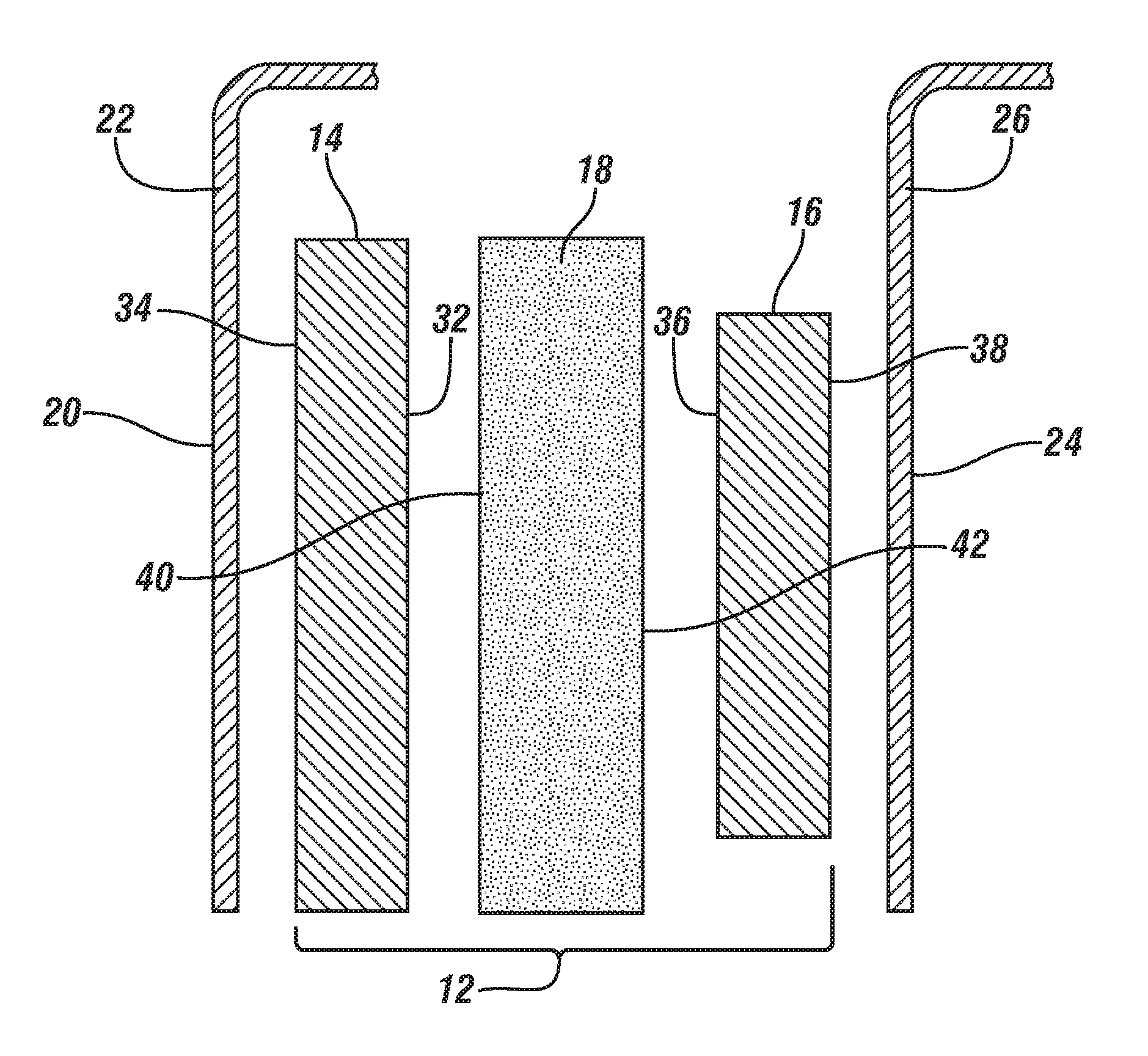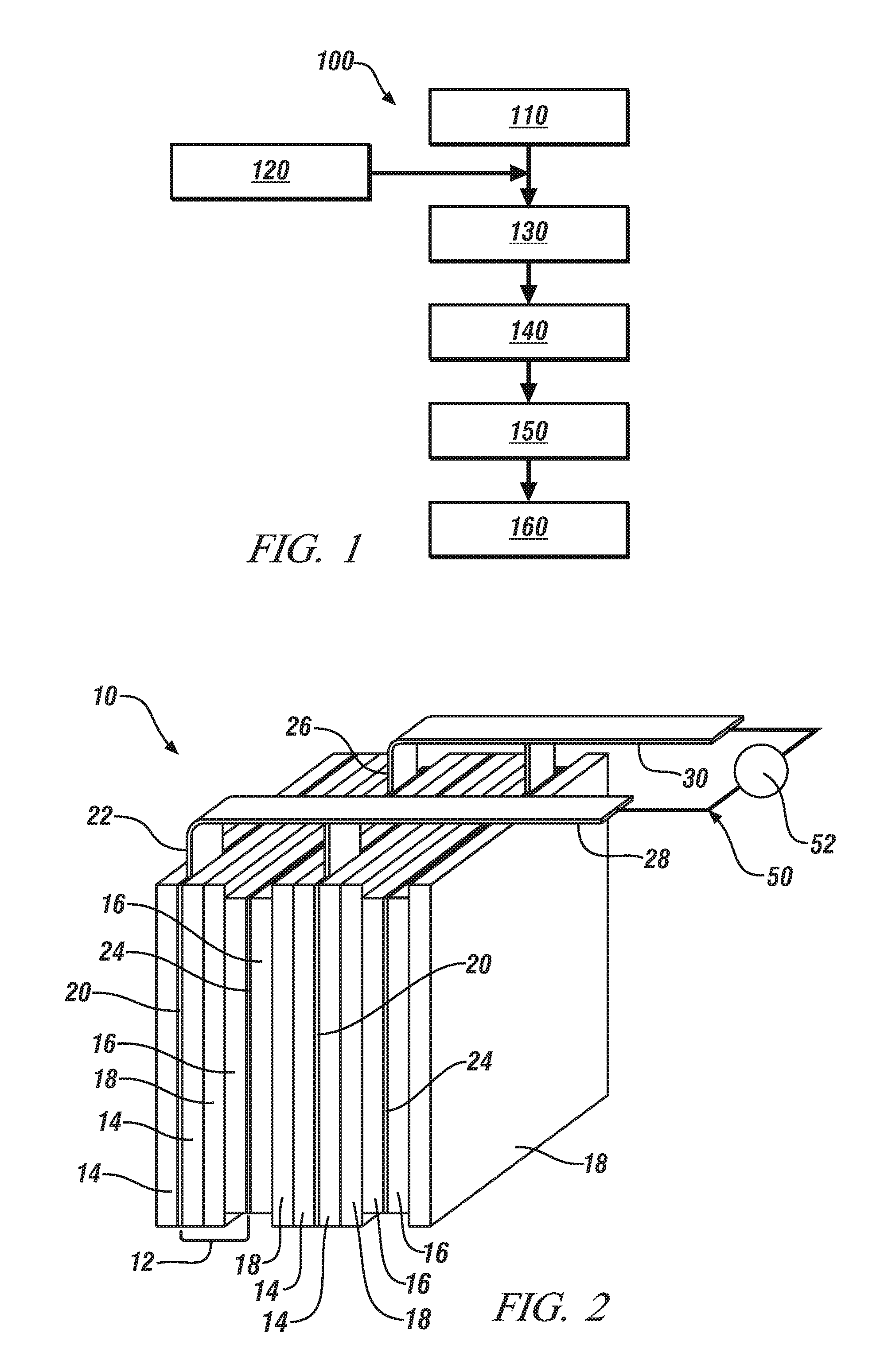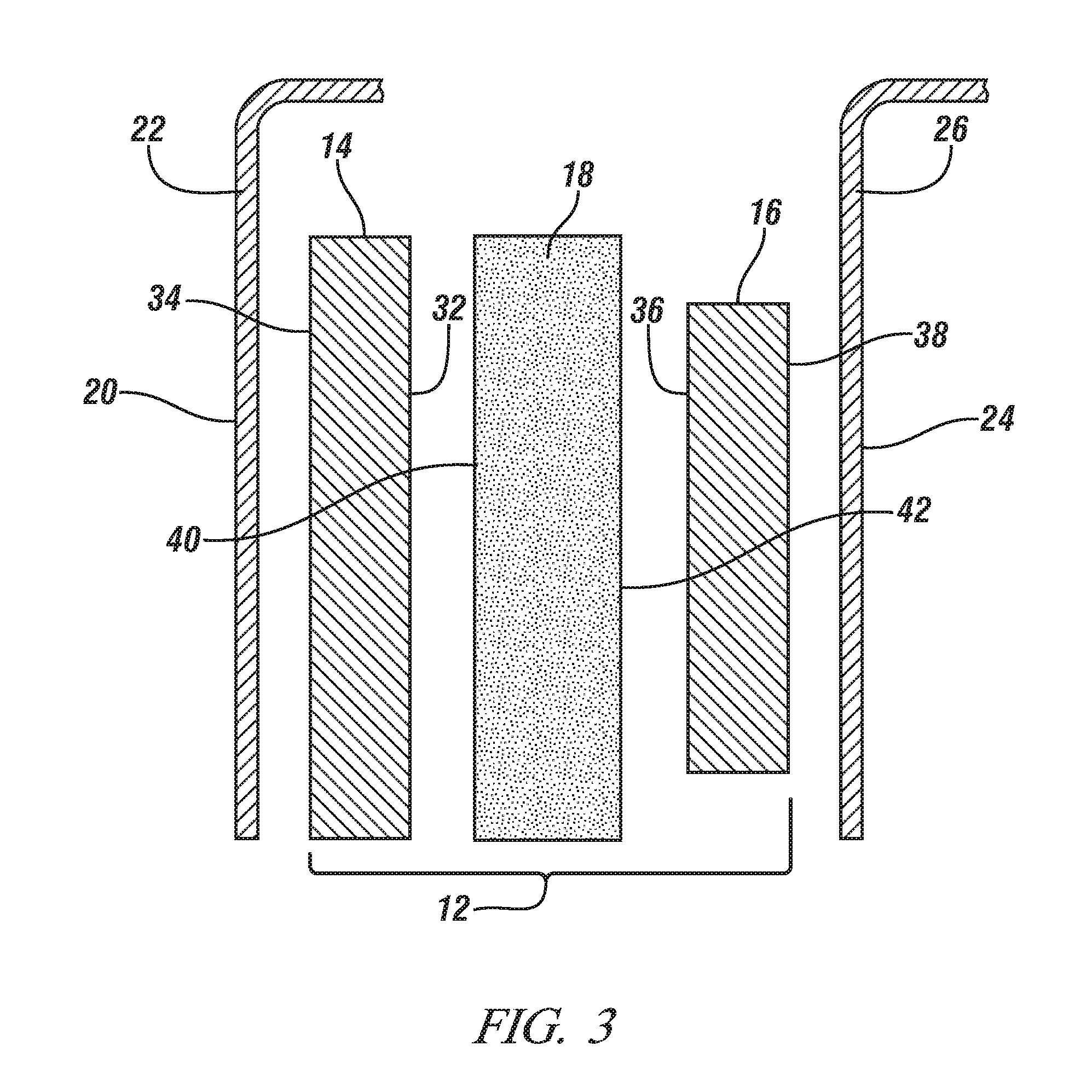Making a lithium ion battery separator
a lithium ion battery and separator technology, applied in the direction of cell components, cell component details, electrochemical generators, etc., can solve the problems of polyolefin separators that are susceptible to certain performance declines, electrochemical cells that are short-circuited, polyolefin separators that are shrinking, softening and even melting, etc., and achieves the effect of convenient drying
- Summary
- Abstract
- Description
- Claims
- Application Information
AI Technical Summary
Benefits of technology
Problems solved by technology
Method used
Image
Examples
example
[0045]This Example demonstrates the lithium ionic conductivity of a porous polymer separator made according to the thermally-induced phase separation method described above in comparison to a conventional monolayer polypropylene lithium ion battery separator obtained from Celgard, LLC (Charlotte, N.C.). The porous polymer separator comprises a PEI polymer matrix. This particular separator is referred to in the remainder of this Example as the “Separator A” for brevity.
[0046]Separator A was formed by a thermally-induced phase separation method in which polyetherimide (PEI) was dissolved in a miscible mixture of, by weight, 95 parts N-methyl-2-pyrrolidone (NMP) and 5 parts water at 50° C. to form a single phase polymer solution that contained 20 wt. % PEI. Here, NMP is the real polymer solvent and water is the polymer non-solvent. Particles of Aerosil R805 (hydrophobic-treated fumed silica particles) were then added to the single phase polymer solution. The amount of these particles a...
PUM
| Property | Measurement | Unit |
|---|---|---|
| thickness | aaaaa | aaaaa |
| particle diameters | aaaaa | aaaaa |
| wt. % | aaaaa | aaaaa |
Abstract
Description
Claims
Application Information
 Login to View More
Login to View More - R&D
- Intellectual Property
- Life Sciences
- Materials
- Tech Scout
- Unparalleled Data Quality
- Higher Quality Content
- 60% Fewer Hallucinations
Browse by: Latest US Patents, China's latest patents, Technical Efficacy Thesaurus, Application Domain, Technology Topic, Popular Technical Reports.
© 2025 PatSnap. All rights reserved.Legal|Privacy policy|Modern Slavery Act Transparency Statement|Sitemap|About US| Contact US: help@patsnap.com



